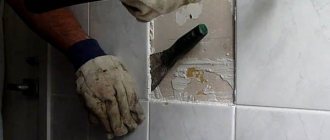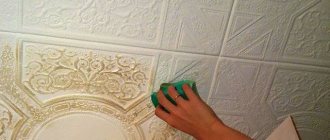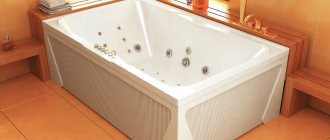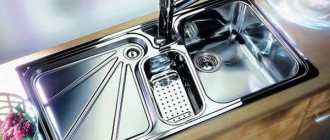How to clean tiles from cement, white deposits, grease
If you do not clean paving slabs, they lose their attractiveness.
To wash paving stones from grease, cement or white deposits, it is necessary to use devices and compositions to effectively clean a specific type of contamination. If means of combating some compounds are used against other substances, this may at least be ineffective, and in the worst case, it will only aggravate the situation.
To destroy dirt, mechanical and chemical cleaning methods are used.
Hand tools help remove excess from paving slabs:
- scraper;
- boaster;
- hammer;
- sandpaper;
- brush with steel wire bristles;
- chisel;
- sand;
- bit.
Iron brush
Sandpaper
Boaster
Scraper
Bit
Hammer and chisel
Large cement deposits are broken with a hammer and chisel. The remaining dirt is swept away with a wire brush and then removed with coarse sandpaper.
In cases where tools alone cannot cope, special household chemicals or folk recipes will help to clean paving slabs from cement after laying.
Before you start washing with any compositions, you need to apply the preparation to the remaining excess stone after installation. This is done to test how the pavement will react to the cleaning product. The solution may destroy the artificial stone or change its color.
The sooner you start cleaning cement, grease or salt stains that have gotten onto the tiles, the better the result you can achieve.
How to clean cement from paving slabs: recommendations
Washing off cement stains from paving slabs is a difficult and troublesome task. The complexity of this process lies both in the amount of work and in the material itself. After all, hardened cement can strongly eat into the surface with absolutely any component.
First, the entire collection of bulk materials should be removed from the site of contamination. Cement stains occur during the installation of curbs when installed on a cement mortar base. Splashes may not be immediately absorbed into the surface of the tile, and they can be removed with powerful water pressure, for example, with a mini-wash.
Tools for cleaning paving slabs.
Removing stains from cement using nails, hammers and chisels is a “barbaric” method, and it will only be appropriate if the contaminated surface is not particularly valuable. And paving slabs are a delicate material, and ideally any unnecessary trace of the repair process should be removed from the surface immediately. Working with frozen marks must be done carefully to avoid scratches on the working surface.
To wash the tiles from cement stains that have not yet fully adhered, you can use ordinary salt, which can clean very efficiently, especially from cement dust. It is applied directly to the contaminated area moistened with cold water. After some time, when the cement becomes loose in consistency under the influence of salt, it can be carefully brushed off with a stiff brush.
If you have an angle grinder or a soft brush, you can try to remove dirt with them. During cleaning, work with them is carried out with reduced intensity.
Sometimes splashes do not penetrate into a solid surface. You can try to chip cement stains from the surface of the sidewalk with a hammer and chisel. If the stains do not stick, you can try to remove them by lightly tapping them with a chisel. It is necessary to tap on the center of the spots. In the best case, the stains will burst and completely break off from the surface.
Choosing a paving slab cleaner
Docker fasade cleans well not only facades, but also paving slabs.
Among industrial products, the following have proven themselves well:
- Docker façade . A chemical solution that penetrates deep into the surface of the tile and destroys the salts that cause the formation of white deposits.
- Docker cement . This is a fast acting cement remover.
- Fuel and lubricants Docker Mazbit Turbo . A universal remedy for heavy greasy stains. Does not contain acid, cleans tiles from all types of machine oil in a few minutes.
- HG removes cement, lime from tiles, paving stones, concrete.
- Cleaner DEKAP SOLS GARD . Deeply and environmentally friendly removes dirt from the sidewalk.
- Barracuda 10K . A powerful product that can be used even in winter.
Many of the drugs have a high price, but it is justified by the corresponding quality of the product.
Fresh pollution is well destroyed by bentonite, from which cat litter is made. In a few minutes it will absorb any moisture.
How to clean cement from paving stones?
Question. Hello! This fall I started insulating the facade of the house with polystyrene foam. He hired a team of “specialists” for these purposes. They convinced me that everything would be done efficiently and cleanly. There was no way to control the work. I arrived at the work reception and froze in horror! The paving stones with which the blind area was laid were literally “contaminated” with frozen cement blots. How to clean cement from paving stones? So high quality and inexpensive.
Answer. Good afternoon There are several ways to clean paving stones and paving slabs from hardened cement. Methods are conventionally divided into: wet, mechanical and chemical. Depending on the degree of contamination, comprehensive cleaning is used using all methods or just one. In your case, a set of measures is recommended, so we will consider each technology separately.
- Wet method. In your case, this is the preparatory stage. Using a broom, a floor rag or a rag made of natural fabric and a bucket with a solution of any detergent (liquid soap), sweep and wipe away traces of “unfrozen” cement from the paving stones. It is recommended to use Karcher-type high-pressure washers if the seams between the paving stones are sealed with strong cement mortar;
- Mechanical method. Considering that removing cement with this option can irreversibly damage the surface of the paving stones, you should act very carefully and carefully. Hardened deposits and “blots” of cement are removed mechanically. For these purposes, you can use the following tools: a chisel, a spatula and any hammer. First, we try to remove the blots with “manual” translational movements of a spatula located at an acute angle to the surface of the paving stones. In this way, you can pick up and clean off a number of contaminants that do not “stick” much to the base. The remaining sagging is removed using a chisel and hammer. The chisel should also be placed at an acute angle to the surface, and the blows of the blast furnace hammer should be gentle and gentle;
- Chemical method. Using a chemical method, you can clean the surface “as clean.” Retail chains offer us special chemical removers based on orthophosphoric or hydrochloric acid. These include: “MELLERUD Cleaner for Tile and Stone”, “HG Cleaner for Paving Stones, Concrete and Paving Slabs”, Cement Remover “HMK® R63” and a number of others.
Important! Phosphoric and hydrochloric acid, which are part of chemicals, belong to the group of strong acids that can cause significant harm to human skin, eyes and clothing. Strictly follow the safety requirements and manufacturer's instructions!
Folk remedies
There is a cheap home remedy for every type of sidewalk stain.
White salt coating
To combat white plaque use:
- Vinegar . A liter of acid is dissolved in a bucket of water. Using a soft brush, broom or roller, distribute the product over the entire surface to be treated. Leave for a couple of hours. The solution is washed off and the tiles are impregnated with anti-salt and water-repellent agents.
- Lemon acid. Pour 5-7 packs of powder into a bucket of water. The tiles are treated similarly to the vinegar solution.
White plaque or stains are removed in dry, sunny weather. To combat them, mechanical cleaning methods are not used, since they are ineffective in this case. A hard brush or sandpaper will only ruin the surface.
Oily stains
The most effective for cleaning sidewalks from grease are:
- Baking soda . Sprinkle the powder generously onto the stain on the tile. Drizzle a little vinegar on top. Foam forms. You need to remove it with a soft brush. Repeat the procedure if necessary.
- Gypsum . Dilute a small amount of powder with water to the consistency of thick sour cream. Add the same amount of detergent such as AOS, Fairy, Comet or Sif. Spread the mixture over the stained surface. Leave until completely dry. After this, scrape off the plaster and wash the tiles.
The first method is more effective for fresh stains, and the second is suitable for deep, old oily stains.
Cement
To clean paving stones from cement, the following measures are effective:
- A weak solution of phosphoric acid or a detergent containing it. Such a liquid can soften old, hardened cement. In the future, it must be neutralized with an aqueous solution of ammonia or garden lime.
- Table salt . It helps to wash street tiles from fresh cement stains. Pour water over the contamination, add plenty of salt and wait 30-40 minutes. After this time, the cement will become loose and can be easily washed off with a soft brush.
Cleaning paving stones using folk remedies is less dangerous for the environment. The effect of self-prepared cleaning solutions can be even higher than that of store-bought preparations.
Chemical removal of cement from paving stones
To remove cement stains from paving stones, solvents containing phosphoric acid are mainly used. Before starting work, you should check the effect of the chemical on an inconspicuous area of the surface or the stone remaining after laying. This is done in order to identify the reaction of the material to the cleaning agent, since it is impossible to predict it in advance due to the fact that the exact composition of the paving stones is unknown. The solution can simply spoil the surface of the stone, discolor or destroy it to a sufficient extent. To neutralize the effect of phosphoric acid, use garden lime, baking soda or ammonia solution, and only one of the above is used.
The use of chemical solvents is permitted only in the concentrations specified by the manufacturer on the packaging. If your attempt to clean the paving stones is unsuccessful, you can try to reapply the solvent. The acid applied a second time will gradually peel off the cement stain from the surface of the stone or tile, after which its remnants are removed with a stiff brush.
If an attempt to use phosphoric acid is unsuccessful, it is recommended to use stronger solutions, for example, compositions based on hydrochloric acid. It is also used only in the concentration indicated by its manufacturer in the instructions on the package. When cleaning with acids, be sure to use goggles to protect your face and eyes, a respirator, and rubber protective gloves. The acid solution is applied to the cement stain and left until completely dry. It is strictly forbidden to touch wet hydrochloric acid, as this can cause severe chemical burns that will require immediate medical attention.
After using hydrochloric acid, it is necessary to neutralize its residues using special compounds, also sold in building materials stores. At the last stage of cleaning, the remaining chemicals are washed off with plenty of water.
To refresh the color of paving stones or paving slabs, it is recommended to use a chemical called trisodium phosphate. After using it, the surface is also washed with water, after which the color of the coating noticeably improves.
It is forbidden to mix different chemical compositions when cleaning surfaces, as an unpredictable chemical reaction can occur.
The last stage of processing paving stones or paving slabs is the application of sealing compounds to surfaces cleaned of cement. Treatment with sealant is carried out only after the stone or tile has completely dried in accordance with the instructions.
How to clean paving slabs to a shine
In order for your pavement to shine like new, it needs to be maintained regularly. About once a month, it depends on how often and in what quantity people walk on it, you need to do the following:
- Use a broom or soft-bristled brush to remove all dust and residue from the path. Repeat the procedure 2-3 times, paying special attention to gaps and notches.
- Dilute any dishwashing detergent in a bucket of hot water to create foam. Moisten a rag or brush with the solution. Clean fresh stains first. After this, rinse the entire surface of the coating.
- Treat the path with a water repellent, for example, Neogard, Tiprom M, GKZh-11.
Thanks to the systematicity of these actions, the pavement will retain its brightness and shine, and any liquids from its surface will be repelled rather than absorbed.
The quality of the tiles is lost if the path is sprinkled with salt in winter.
Average cost of professional paving slab cleaning
Cleaning companies use special equipment to clean sidewalks.
If you don’t have time to keep the sidewalks in order yourself, cleaning companies will come to the rescue.
On average, for cleaning paths from atmospheric pollution, specialists charge from 80 rubles per 1 sq. m. m. The price for putting the paving stones in order after repair will be higher - from 300 rubles. for 1 sq. m. Treating the tiles with a moisture-repellent compound will cost the owner 150 rubles. per sq. m. and above. For cleaning a sidewalk that has greasy or cement stains, white deposits or rust, cleaning companies charge a fee of 85 rubles.
A representative of the organization can tell you the exact cost of the service after inspecting the facility. After all, everything will depend on the degree of its contamination. The price includes the work of a master, the use of professional equipment and cleaning products.
Before scrubbing stains of varying complexity from paving slabs, you should think about the environment. Any chemical will not benefit the grass, flowers, or insects. Therefore, if it is possible to remove dirt mechanically, it is worth choosing it.











